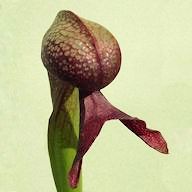Post by stevebooth on Nov 4, 2015 16:12:42 GMT
I was out in the very welcome sunshine of last weekend, pottering as one does in the garden, when I began to notice (all too late) that there were some plants in the bogs suffering from rhizome rot and starting to collapse. Most of the rhizomes were overgrown with sphagnum, which could be why I didn’t spot it earlier, but normally the covering of sphagnum is a help more than a hindrance in these matters, so it was a bit of a concern. I spent two hours or so removing, cleaning and cutting off dead, diseased and suspect growth, chastising myself for not getting all the dead leaf petioles off in summer, and I suspect that come the spring there will be more casualties.
I generally leave the sphagnum cover over the rhizomes in winter to provide some protection and will do so with the seemingly unaffected plants. The weather of late has been ideal for this type of growth, I can only assume that the lack of wind has exacerbated the situation.
The bogs have been drained for a month now, as high water levels can be another cause of rot at this time of year.
I suspect I am suffering from not having split the clumps of plants up, for four or five years. It was noticeable that the majority of the rot was on the larger rosettes of plants, with some dead rhizome at the centre generally being the worst affected or the start of the infection. This, with outside bogs, is a common cause of rot, just when you think everything is filling out nicely you have to go in and divide otherwise you regret it later.
So all in all a fair bit of work to be done in spring, infection control, dividing the larger plants, replacement/re-invigoration of media, not to mention the search for a hole in the liner of one of the bogs, which I suspect has been chewed through by vermin. That will involve the digging out of a lot of media and repair or if not replacement of a liner. Ahh well it gives you something to look forward to don’t it.
Cheers
Steve
I generally leave the sphagnum cover over the rhizomes in winter to provide some protection and will do so with the seemingly unaffected plants. The weather of late has been ideal for this type of growth, I can only assume that the lack of wind has exacerbated the situation.
The bogs have been drained for a month now, as high water levels can be another cause of rot at this time of year.
I suspect I am suffering from not having split the clumps of plants up, for four or five years. It was noticeable that the majority of the rot was on the larger rosettes of plants, with some dead rhizome at the centre generally being the worst affected or the start of the infection. This, with outside bogs, is a common cause of rot, just when you think everything is filling out nicely you have to go in and divide otherwise you regret it later.
So all in all a fair bit of work to be done in spring, infection control, dividing the larger plants, replacement/re-invigoration of media, not to mention the search for a hole in the liner of one of the bogs, which I suspect has been chewed through by vermin. That will involve the digging out of a lot of media and repair or if not replacement of a liner. Ahh well it gives you something to look forward to don’t it.
Cheers
Steve








 not here it isn't
not here it isn't